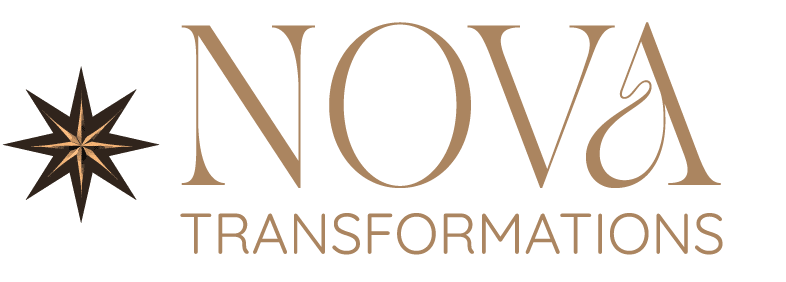Understanding emotional regulation
Emotional regulation refers to your ability to identify, manage, and modify emotional responses to everyday challenges. In recovery, these emotional regulation skills in recovery become a cornerstone for fostering resilience and preventing relapse. By recognising your feelings as they arise, assessing their intensity, and choosing appropriate responses rather than reacting impulsively, you build a foundation for lasting change and personal growth.
Definition and process
Emotional regulation involves several key steps:
- Awareness: Noticing physical sensations or thoughts that signal a rising emotion.
- Identification: Labeling the emotion accurately, whether it is anger, anxiety, sadness, or joy.
- Assessment: Evaluating intensity and potential triggers before responding.
- Strategy selection: Choosing a healthy coping method—such as deep breathing, cognitive reframing, or grounding—to address the emotion.
- Evaluation: Reflecting on how effectively your response managed the emotion and adjusting for next time.
When you follow this process consistently, you develop a supportive environment within yourself. This structured approach reduces emotional dysregulation—impulsive reactions that often lead to unhealthy coping, including substance use [1].
Neuroscience foundations
Understanding the brain’s role can help you appreciate why regulation matters. The amygdala processes emotional stimuli, especially threats or stressors, while the prefrontal cortex acts as a moderator, helping you consciously regulate impulses and maintain composure under pressure [2]. Strengthening prefrontal cortex activity through practice allows you to:
- Stay grounded during high-stress situations.
- Prevent overwhelming feelings from dictating behavior.
- Make decisions aligned with your values and recovery goals.
Overall, this neuroscience perspective illustrates that emotional regulation is not just a mental skill, but a biological capability you can enhance with intentional practice.
Role in addiction recovery
Developing strong emotional regulation skills is crucial for anyone in sobriety. Addiction often develops as an attempt to self-medicate stress, trauma, or overwhelming feelings. By learning to navigate emotions effectively, you reduce the risk of relapse and build resilience against triggers.
Preventing relapse
Emotional dysregulation—when you react to stress or negative feelings impulsively—can directly contribute to a return to substance use. Effective regulation strategies help you:
- Recognize craving cues before they escalate.
- Pause and choose a healthier activity or coping technique.
- Avoid rapid, impulsive decisions that undermine progress.
Research shows that combined regulation approaches, such as integrating mindfulness and cognitive strategies over time, yield better outcomes than relying on a single technique [1].
Enhancing decision making
When you manage emotions mindfully, you improve your ability to make choices that support recovery. Emotional regulation skills enable you to:
- Evaluate options calmly under stress.
- Weigh long-term benefits of sobriety over short-term relief.
- Stay committed to goals even when confronted by intense feelings.
In addition, controlled emotional responses promote better relationships, social functioning, and self-esteem—all of which reinforce your motivation to maintain recovery.
Common regulation strategies
A variety of therapies and practices can help you master emotional regulation. Below is an overview of evidence-based approaches offered in many Charlotte rehab programs.
Mindfulness and meditation
Mindfulness involves paying nonjudgmental attention to the present moment. Regular practice can:
- Ground you during cravings or emotional surges.
- Increase awareness of thought patterns without becoming entangled.
- Improve overall mental clarity.
Techniques include breathing exercises, body scans, and guided imagery. For practical methods, see mindfulness breathing techniques for cravings (/mindfulness-breathing-techniques-for-cravings) and benefits of mindfulness in addiction treatment (/benefits-of-mindfulness-in-addiction-treatment).
Cognitive restructuring
Cognitive restructuring, a core component of CBT therapy, teaches you to identify and challenge negative thoughts that fuel emotional distress. Steps include:
- Notice a distressing thought.
- Examine evidence for and against it.
- Replace it with a balanced, realistic alternative.
- Practice the new thought until it becomes automatic.
This method not only eases negative emotions but also strengthens your problem-solving skills and self-confidence [3].
Dialectical behavior therapy
Dialectical behavior therapy (DBT) combines mindfulness with emotion regulation, distress tolerance, and interpersonal effectiveness. You learn to:
- Label and understand intense feelings.
- Develop skills to tolerate distress without resorting to substances.
- Communicate needs clearly and maintain healthy boundaries.
For a deeper comparison, explore dbt vs cbt for substance use disorders (/dbt-vs-cbt-for-substance-use-disorders).
Expressive arts therapy
Expressive arts therapy uses creative outlets like art, music, or dance to help you process and regulate emotions. Benefits include:
- Alternative communication of complex feelings.
- Release of tension in a nonverbal, supportive environment.
- Enhanced self-awareness and emotional healing.
Many centers integrate art and music therapy in addiction recovery (/art-and-music-therapy-in-addiction-recovery) and creative expression therapy for trauma (/creative-expression-therapy-for-trauma).
Somatic and movement therapies
Somatic approaches focus on the body-mind connection. Techniques such as yoga, tactile exercises, and neurofeedback can:
- Reduce physiological arousal linked to stress.
- Improve heart rate variability, a marker of emotional regulation capacity [2].
- Foster a sense of grounding and present-moment awareness.
Consider exploring using yoga and mindfulness in treatment (/using-yoga-and-mindfulness-in-treatment) and how somatic therapy helps process trauma (/how-somatic-therapy-helps-process-trauma).
Integrating skills in treatment
To maximize the benefits of emotional regulation training, programs often embed these strategies within comprehensive care plans.
Individualized therapy plans
Every recovery journey is unique. Tailored treatment programs may combine:
- CBT and DBT sessions.
- Mindfulness-based relapse prevention (/mindfulness-based-relapse-prevention).
- Trauma-informed care (/trauma-informed-care-in-addiction-treatment).
- Dual diagnosis approaches when co-occurring disorders are present (/dual-diagnosis-therapy-methods-explained).
By customizing modalities according to your history, triggers, and goals, you receive the targeted support necessary for lasting recovery.
Group and peer support
Group therapy provides a supportive environment where you can practice regulation skills together. Small cohorts often focus on:
- Sharing real-life challenges and strategies.
- Building accountability and mutual encouragement.
- Learning from peers who have navigated similar obstacles.
For more on this approach, see small group therapy approach in rehab (/small-group-therapy-approach-in-rehab) and group therapy benefits in addiction recovery (/group-therapy-benefits-in-addiction-recovery).
Combining modalities for long-term change
Research indicates that integrating multiple emotional regulation strategies over time yields stronger outcomes than single-method approaches [4]. A typical integrative plan might include:
| Modality | Purpose | Frequency |
|---|---|---|
| CBT sessions | Cognitive restructuring | Weekly |
| DBT skills groups | Emotion regulation and distress tolerance | Biweekly |
| Mindfulness practice | Present-moment awareness | Daily |
| Expressive arts workshops | Nonverbal processing of emotions | Monthly |
| Somatic exercises (e.g., yoga) | Body-centered regulation and grounding | 2–3 times/week |
This comprehensive care ensures you develop a robust set of coping tools for diverse emotional challenges.
Measuring progress and outcomes
Tracking your growth helps maintain motivation and guides treatment adjustments.
Self-assessment tools
You can use simple scales and journals to gauge emotional regulation progress:
- Daily mood logs rating intensity of emotions.
- Craving diaries noting triggers, coping strategies, and outcomes.
- Weekly reflection prompts on how you applied specific skills.
These self-assessments promote self-awareness and highlight areas needing further practice.
Professional evaluation metrics
Clinicians often employ standardized measures such as:
- Difficulties in Emotion Regulation Scale (DERS).
- Emotional Regulation Questionnaire (ERQ).
- Heart rate variability monitoring during stress-inducing tasks.
Regular professional feedback ensures your treatment plan remains aligned with evolving needs and supports continued resilience building.
Building resilience through practice
Developing emotional regulation is an ongoing journey. Embedding these skills into daily life strengthens your capacity to face adversity.
Daily routines and habits
Consistency is key. Consider:
- Setting aside 10–15 minutes each morning for mindfulness.
- Scheduling weekly creative expression sessions.
- Establishing brief check-ins throughout the day to label emotions.
Over time, these habits become automatic, reinforcing self-control and emotional stability.
Handling triggers and stressors
Identifying personal triggers allows you to craft pre-emptive plans. Strategies include:
- Creating an “urge plan” for high-risk situations.
- Keeping a grounding kit with calming items—fidget tools, music playlists, or grounding scripts.
- Practicing distress tolerance skills from DBT when immediate relief is needed.
By preparing in advance, you reduce the likelihood of impulsive reactions.
Maintaining momentum after treatment
Post-discharge, you can sustain progress through:
- Outpatient coaching or alumni support groups.
- Digital apps for guided mindfulness and journaling.
- Periodic booster sessions with therapists to reinforce key skills.
Continued engagement ensures that your emotional regulation abilities remain sharp and effective.
Planning for sustainable recovery
As you move forward, consider these steps to solidify emotional regulation in your daily life:
- Explore individualized therapy options (/individualized-therapy-for-long-term-success) to fine-tune your plan.
- Participate in group and peer support (/group-therapy-benefits-in-addiction-recovery) for built-in accountability.
- Incorporate holistic practices (/benefits-of-holistic-addiction-treatment-programs) and trauma-responsive care (/trauma-therapy-for-addiction-recovery).
- Develop a relapse prevention blueprint with stress management strategies (/stress-management-therapy-for-recovery) and mindfulness-based components (/mindfulness-based-relapse-prevention).
By weaving these elements into a cohesive, supportive framework, you empower yourself with the comprehensive care and personalized support necessary for lasting resilience and sustained recovery.








